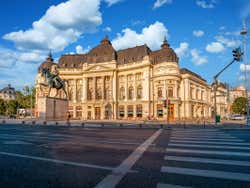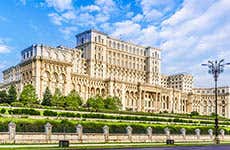
Victory Avenue
Victory Avenue, also known as Calea Victoriei, is the most important and oldest street in Bucharest. You can explore it from the heart of the city, in the historic center, right up to Victory Square.
A Step Back in Time
The history of this famous road dates back to 1692 when Prince Constantin Brâncoveanu wanted a thoroughfare between the royal court (in the old town) and his palace in Mogoşoaia (a village to the north of the capital). This was called the Mogoşoaia Bridge.
Used as the setting for many novels throughout history, this street evolved and evolved, becoming the first street in the city to have lighting (it was lit with candles in 1814) and the first to be paved in 1842.
In October 1878, after the Romanian victory in the War of Independence, it was renamed Calea Victoriei (meaning Victory Avenue), and the returning victorious troops marched up the street in celebration.
Currently, it is the most expensive and exclusive street in Bucharest, with hotel chains such as Hilton and shops such as Gucci and Rolex housed within decadent, emblematic buildings. This truly is one of the most charming places in the city.
Iconic Buildings & Monuments
If you go from one end of the avenue to the other (which is almost compulsory when visiting the city!), you'll find incredible buildings and monuments, such as the Romanian Athenaeum, the National Museum of Art of Romania, the National History Museum of Romania, Cantacuzino Palace, CEC Palace, Revolution Square, and Telephone Palace. This last one is a modern building built by the American company ITT in 1931 after a big controversy.


Nearby places
National Museum of Art of Romania (315 m) Revolution Square (383 m) Kretzulescu Church (464 m) Cismigiu Park (613 m) George Enescu National Museum (889 m)

